Growing radishes in containers is easier than you might think, and I’m here to show you how! Forget those sprawling garden beds – you can enjoy the peppery crunch of homegrown radishes even if you only have a balcony, patio, or sunny windowsill. For centuries, radishes have been a staple in diets across the globe, from ancient Egypt where they were offered to the gods, to medieval Europe where they were a common crop. Their quick growth and adaptability have made them a favorite for gardeners of all skill levels.
But let’s be honest, sometimes life gets in the way of tending a traditional garden. That’s where container gardening comes in! Maybe you’re short on space, dealing with poor soil, or simply want the convenience of having fresh radishes right outside your door. Whatever the reason, this DIY guide will equip you with all the knowledge you need to successfully grow these vibrant root vegetables in pots. I’ll walk you through everything from choosing the right container and soil to watering and harvesting, ensuring you get a bountiful crop of delicious, crisp radishes. So, grab your gardening gloves, and let’s get started on your journey to growing radishes in containers!
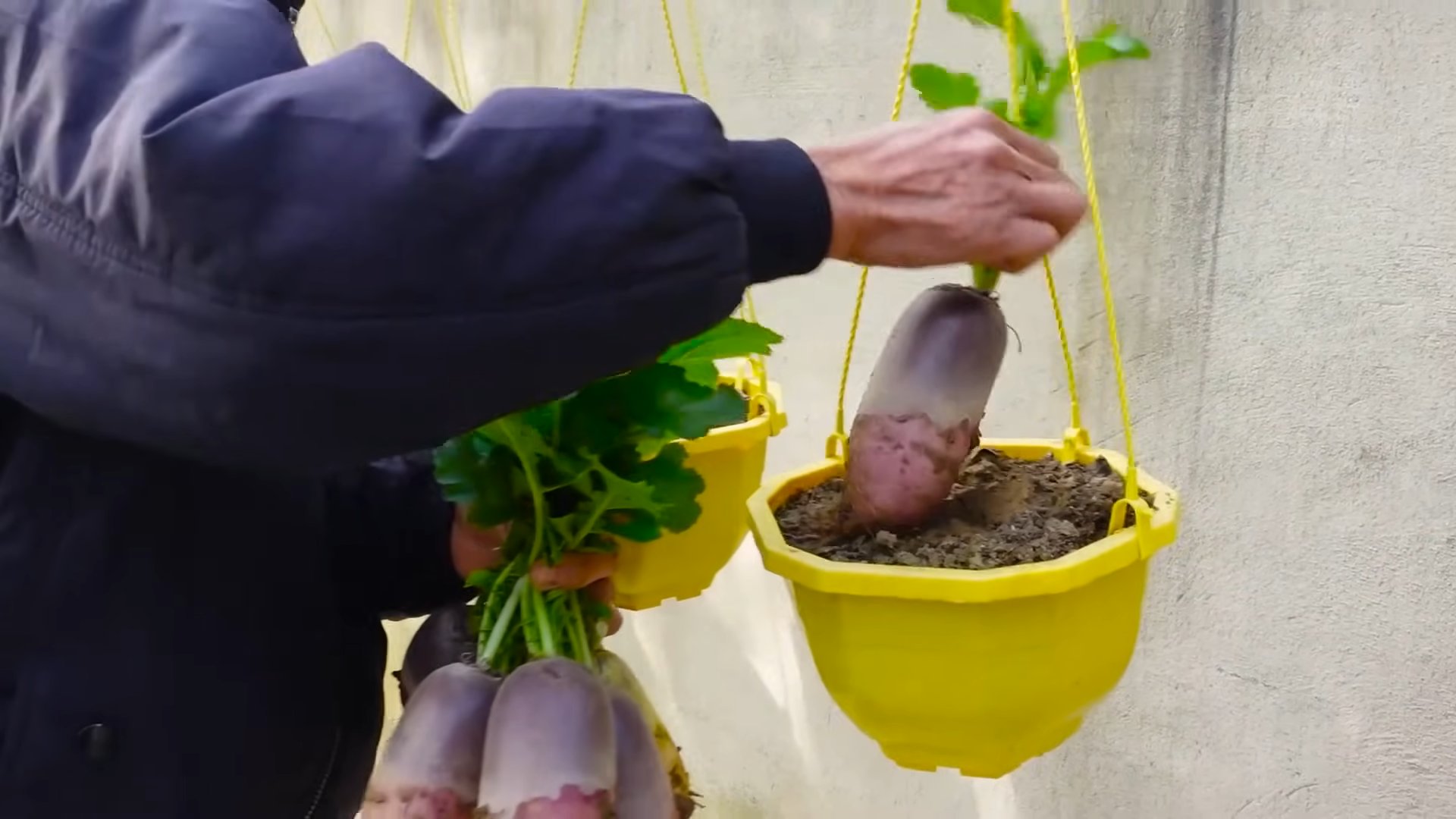
Growing Radishes in Containers: A Beginner’s Guide
Hey there, fellow gardening enthusiasts! Ever thought about growing your own radishes? They’re super easy, incredibly fast-growing, and perfect for container gardening, even if you’re short on space. I’m going to walk you through everything you need to know to have a bountiful radish harvest right on your patio or balcony. Let’s get started!
Why Grow Radishes in Containers?
Radishes are fantastic for container gardening for a few key reasons:
* Fast Growth: Seriously, we’re talking about a harvest in as little as three to four weeks! This makes them incredibly rewarding for beginner gardeners.
* Small Space Friendly: They don’t need a ton of space, so even a small balcony or patio can accommodate a radish crop.
* Succession Planting: Because they grow so quickly, you can plant new seeds every couple of weeks for a continuous harvest throughout the growing season.
* Easy to Grow: Radishes are relatively low-maintenance and forgiving, making them a great choice for novice gardeners.
What You’ll Need
Before we dive into the planting process, let’s gather our supplies. Here’s what you’ll need:
* Container: Choose a container that’s at least 6 inches deep. Radishes need room to develop their roots. The wider the container, the more radishes you can grow. A good size is about 12 inches in diameter.
* Potting Mix: Use a high-quality potting mix that drains well. Avoid using garden soil, as it can compact in containers and hinder root growth. I recommend a mix specifically formulated for vegetables.
* Radish Seeds: Select your radish variety! There are tons of options, from classic red radishes to colorful varieties like ‘French Breakfast’ or ‘Watermelon’ radishes.
* Watering Can or Hose: Essential for keeping your radishes hydrated.
* Fertilizer (Optional): A balanced liquid fertilizer can give your radishes a boost, but it’s not strictly necessary.
* Trowel or Small Shovel: For filling your container with potting mix and planting seeds.
* Sunlight: Radishes need at least 6 hours of sunlight per day.
Step-by-Step Planting Guide
Okay, let’s get our hands dirty! Here’s how to plant your radish seeds in containers:
1. Prepare Your Container:
* Make sure your container has drainage holes. Radishes don’t like sitting in soggy soil.
* Fill the container with your chosen potting mix, leaving about an inch of space at the top.
* Gently pat down the soil to create a level surface.
2. Sow the Seeds:
* Radish seeds are small, so handle them carefully.
* Sow the seeds about ½ inch deep and 1 inch apart. You can use your finger to make small indentations in the soil.
* If you’re planting multiple rows, space them about 2 inches apart.
* Don’t overcrowd the seeds! Overcrowding can lead to smaller radishes.
3. Cover the Seeds:
* Gently cover the seeds with a thin layer of potting mix.
* Lightly pat down the soil again.
4. Water Thoroughly:
* Water the container gently but thoroughly until the soil is evenly moist.
* Avoid overwatering, which can cause the seeds to rot.
5. Place in a Sunny Location:
* Move your container to a spot that receives at least 6 hours of sunlight per day.
* If you don’t have a sunny spot, you can use a grow light.
Caring for Your Radishes
Now that your radishes are planted, it’s time to provide them with the care they need to thrive.
1. Watering:
* Keep the soil consistently moist, but not soggy.
* Water when the top inch of soil feels dry to the touch.
* Avoid letting the soil dry out completely, as this can cause the radishes to become tough and bitter.
* Water in the morning to allow the foliage to dry before nightfall, which can help prevent fungal diseases.
2. Thinning:
* Once your seedlings emerge (usually within a few days), you’ll need to thin them out.
* Thinning involves removing some of the seedlings to give the remaining plants enough space to grow.
* When the seedlings are about 1 inch tall, thin them to about 2 inches apart.
* Simply snip off the unwanted seedlings at the soil line with scissors. Don’t pull them out, as this can disturb the roots of the remaining plants.
3. Fertilizing (Optional):
* If you want to give your radishes a boost, you can fertilize them with a balanced liquid fertilizer.
* Follow the instructions on the fertilizer package.
* Fertilize every two weeks or so.
* Avoid over-fertilizing, as this can lead to excessive foliage growth at the expense of root development.
4. Weed Control:
* Keep an eye out for weeds and remove them promptly.
* Weeds can compete with your radishes for nutrients and water.
* Hand-pull weeds carefully to avoid disturbing the radish roots.
Dealing with Pests and Diseases
Radishes are generally pest-resistant, but there are a few things to watch out for:
* Flea Beetles: These tiny beetles can chew small holes in the leaves. Cover your plants with row covers to prevent flea beetles from reaching them. You can also use insecticidal soap if necessary.
* Root Maggots: These pests can damage the roots of your radishes. Rotate your crops each year to prevent root maggots from building up in the soil. You can also use diatomaceous earth around the base of your plants.
* Fungal Diseases: Overwatering can lead to fungal diseases. Make sure your container has good drainage and avoid watering the foliage. If you notice any signs of fungal disease, such as powdery mildew, treat your plants with a fungicide.
Harvesting Your Radishes
The best part! Radishes are ready to harvest when their roots are about 1 inch in diameter. The time to harvest depends on the variety, but it’s usually around 3-4 weeks after planting.
1. Check for Readiness:
* Gently brush away some of the soil around the base of the plant to check the size of the radish.
* If the radish is the size you want, it’s ready to harvest.
2. Harvesting:
* Grasp the radish leaves near the base of the plant.
* Gently pull the radish straight up out of the soil.
* If the radish is difficult to pull, loosen the soil around it with a trowel.
3. Cleaning and Storing:
* Wash the radishes thoroughly to remove any dirt.
* Trim off the leaves, leaving about ½ inch of stem.
* Store the radishes in a plastic bag in the refrigerator.
* They should keep for about a week.
Succession Planting for Continuous Harvest
As I mentioned earlier, one of the great things about radishes is that you can succession plant them for a continuous harvest. Here’s how:
* Plant a new batch of seeds every 1-2 weeks. This will ensure that you always have radishes ready to harvest.
* Choose different varieties. Experiment with different radish varieties to find your favorites.
* Keep track of your planting dates. This will help you know when to expect your harvest.
Troubleshooting
Even with the best care, you might encounter some problems when growing radishes. Here are a few common issues and how to fix them:
* Radishes are small and underdeveloped: This could be due to overcrowding, lack of sunlight, or poor soil. Thin your seedlings, move your container to a sunnier location, and make sure you’re using a good-quality potting mix.
* Radishes are tough and bitter: This is often caused by letting the soil dry out or harvesting the radishes too late. Keep the soil consistently moist and harvest the radishes when they’re the right size.
* Radishes are splitting: This can be caused by inconsistent watering. Try to water your radishes regularly and avoid letting the soil dry out completely.
* Radishes are bolting (going to seed): This is often caused by hot weather. Radishes prefer cool weather, so try to plant them in the spring or fall. You can also provide shade for your plants during the hottest part of the day.
Variety Recommendations
Here are a few
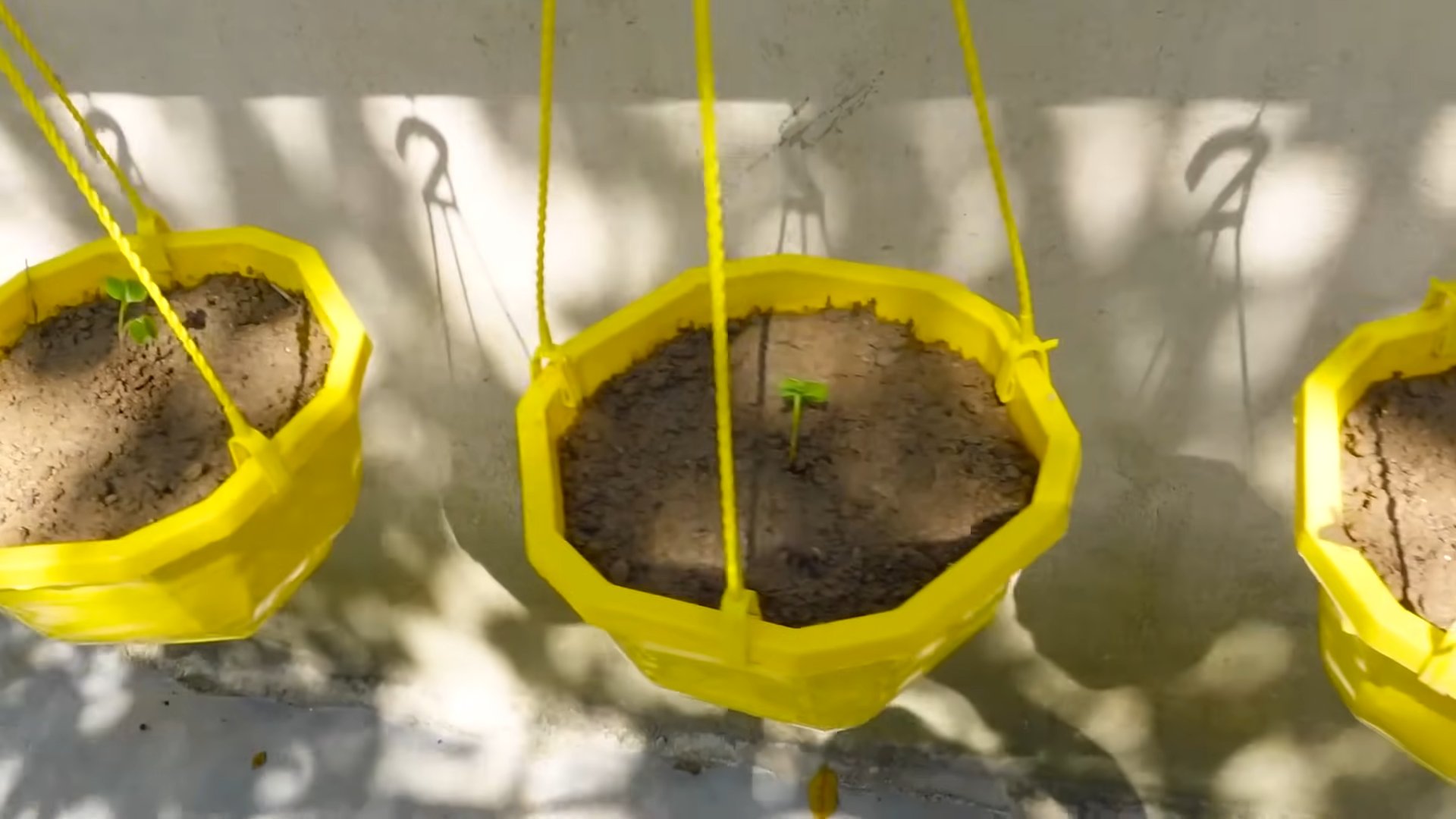
Conclusion
So, there you have it! Growing radishes in containers is not just a possibility; it’s a pathway to fresh, peppery goodness right at your fingertips. We’ve walked through the simple steps, from selecting the right container and soil to nurturing your tiny radish seedlings into vibrant, edible roots. But why is this DIY trick a must-try?
Firstly, it’s incredibly accessible. Whether you have a sprawling garden or a tiny balcony, container gardening democratizes the joy of growing your own food. Radishes, in particular, are perfect for this because they are fast-growing and don’t require a lot of space. Imagine the satisfaction of harvesting crisp, spicy radishes just weeks after planting, knowing you nurtured them from seed to table.
Secondly, it’s a fantastic way to control your growing environment. You can protect your radishes from pests, ensure they get the right amount of sunlight, and easily move them indoors if the weather turns unfavorable. This level of control translates to a higher success rate, especially for beginner gardeners.
Thirdly, growing your own radishes allows you to experiment with different varieties. Forget the bland, store-bought radishes. With container gardening, you can explore heirloom varieties like French Breakfast, Cherry Belle, or even the vibrant Watermelon radish. Each variety offers a unique flavor profile and visual appeal, adding excitement to your salads and snacks.
But the benefits don’t stop there. Growing radishes in containers is also a sustainable practice. You’re reducing your reliance on commercially grown produce, which often travels long distances and contributes to carbon emissions. Plus, you can use organic soil and fertilizers, ensuring your radishes are free from harmful chemicals.
Ready to take your radish game to the next level? Consider these variations:
* Succession Planting: Plant a new batch of radish seeds every two weeks to ensure a continuous harvest throughout the growing season.
* Companion Planting: Plant radishes alongside carrots to deter carrot root flies, or with lettuce to provide shade and keep the soil cool.
* Vertical Gardening: If you’re really short on space, try growing radishes in a vertical planter or hanging basket.
We’ve covered the basics, but the real magic happens when you get your hands dirty and start experimenting. Don’t be afraid to try different soil mixes, watering techniques, or even different types of containers. The most important thing is to have fun and learn from your experiences.
So, what are you waiting for? Grab a container, some soil, and a packet of radish seeds, and embark on your own radish-growing adventure. We’re confident that you’ll be amazed by the results. And when you do, we want to hear all about it! Share your photos, tips, and experiences in the comments below. Let’s build a community of radish enthusiasts and inspire others to discover the joy of growing their own food. Let’s get growing those radishes in containers!
Frequently Asked Questions (FAQ)
What is the best size container for growing radishes?
The ideal container size depends on the radish variety you choose, but generally, a container that is at least 6 inches deep and 6 inches wide is sufficient for most varieties. For larger varieties like Watermelon radishes, you might want to opt for a container that is 8-10 inches deep. The key is to provide enough space for the roots to develop without being overcrowded. Remember, radishes are shallow-rooted, so depth is more important than width. If you’re planting multiple radishes in one container, ensure there’s at least 1-2 inches of space between each plant. Overcrowding can lead to smaller radishes and increased competition for nutrients.
What type of soil is best for growing radishes in containers?
Radishes thrive in well-draining, loose soil that is rich in organic matter. A good potting mix specifically formulated for vegetables is an excellent choice. Avoid using heavy garden soil, as it can compact and hinder root development. You can also create your own soil mix by combining equal parts of potting soil, compost, and perlite or vermiculite. The compost provides essential nutrients, while the perlite or vermiculite improves drainage and aeration. A slightly acidic to neutral pH (around 6.0 to 7.0) is ideal. Before planting, amend the soil with a slow-release fertilizer to provide a steady supply of nutrients throughout the growing season.
How often should I water my container radishes?
Radishes need consistent moisture to grow quickly and develop crisp, flavorful roots. Water your container radishes regularly, keeping the soil consistently moist but not waterlogged. Check the soil moisture level daily by sticking your finger about an inch into the soil. If it feels dry, it’s time to water. Water deeply, allowing the water to drain out of the bottom of the container. Avoid overhead watering, as it can promote fungal diseases. During hot, dry weather, you may need to water your radishes more frequently. Mulching around the plants can help retain moisture and keep the soil cool.
How much sunlight do radishes need?
Radishes prefer full sun, which means at least 6 hours of direct sunlight per day. However, they can also tolerate partial shade, especially in hot climates. If you live in a region with intense summer heat, providing some afternoon shade can prevent the radishes from bolting (going to seed prematurely). Place your container radishes in a sunny location, such as a south-facing balcony or patio. If you don’t have access to enough natural sunlight, you can supplement with grow lights.
How long does it take for radishes to grow in containers?
One of the best things about radishes is their quick growth rate. Most varieties mature in just 3-4 weeks from planting. However, the exact time can vary depending on the variety, growing conditions, and weather. Keep an eye on your radishes and harvest them when they reach the desired size. Overripe radishes can become woody and bitter. To ensure a continuous harvest, plant a new batch of seeds every two weeks.
What are some common pests and diseases that affect radishes in containers?
While radishes are relatively pest-resistant, they can be susceptible to certain pests and diseases, especially in container gardens. Common pests include flea beetles, aphids, and root maggots. Flea beetles can chew small holes in the leaves, while aphids suck sap from the plants. Root maggots can damage the roots, making them unmarketable. To prevent pest problems, inspect your plants regularly and remove any pests you find. You can also use organic pest control methods, such as insecticidal soap or neem oil. Common diseases that affect radishes include damping-off and fungal leaf spots. Damping-off is a fungal disease that can kill seedlings, while fungal leaf spots can cause unsightly blemishes on the leaves. To prevent these diseases, use well-draining soil, avoid overwatering, and provide good air circulation.
Can I grow radishes in containers indoors?
Yes, you can grow radishes in containers indoors, but you’ll need to provide them with adequate light. A sunny windowsill that receives at least 6 hours of direct sunlight per day is ideal. If you don’t have enough natural light, you can use grow lights. Choose a full-spectrum grow light and position it a few inches above the plants. Keep the soil consistently moist and provide good air circulation to prevent fungal diseases.
How do I know when to harvest my radishes?
The best way to determine when to harvest your radishes is to check the size of the roots. Most varieties are ready to harvest when the roots are about 1 inch in diameter. You can also gently brush away some of the soil around the base of the plant to check the size of the root. If the roots are the desired size, gently pull the radishes out of the soil. If the soil is dry, water it before harvesting to make it easier to pull the radishes. Harvest your radishes promptly, as overripe radishes can become woody and bitter.

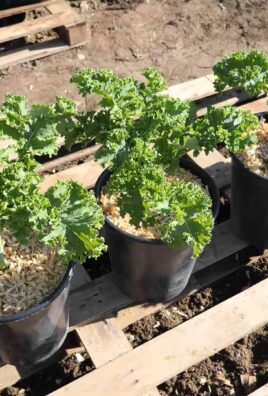
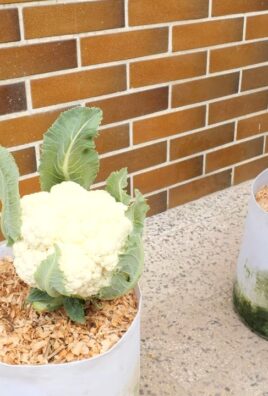
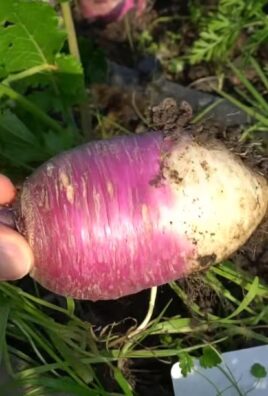
Leave a Comment